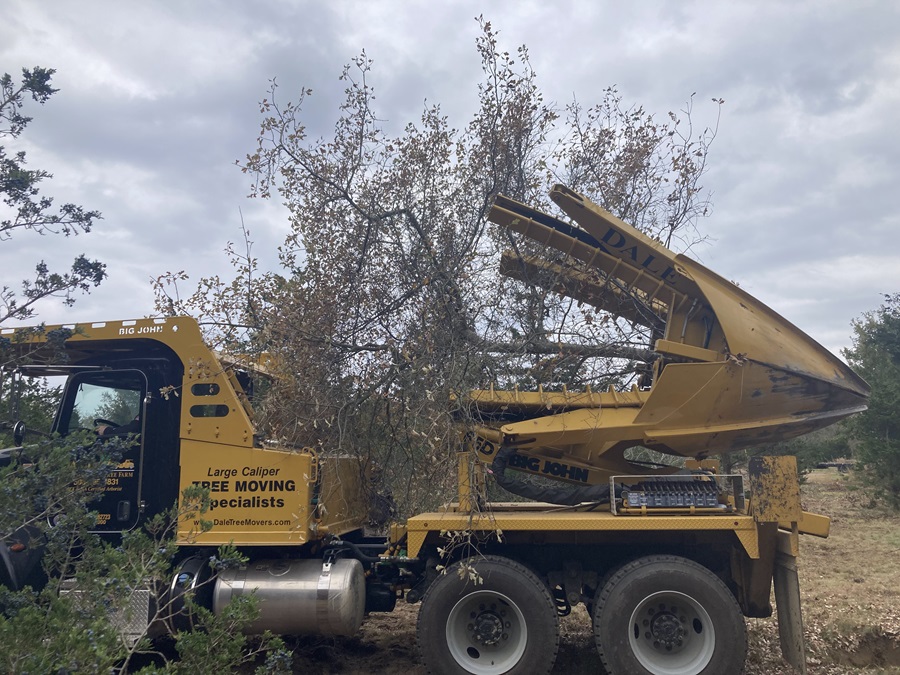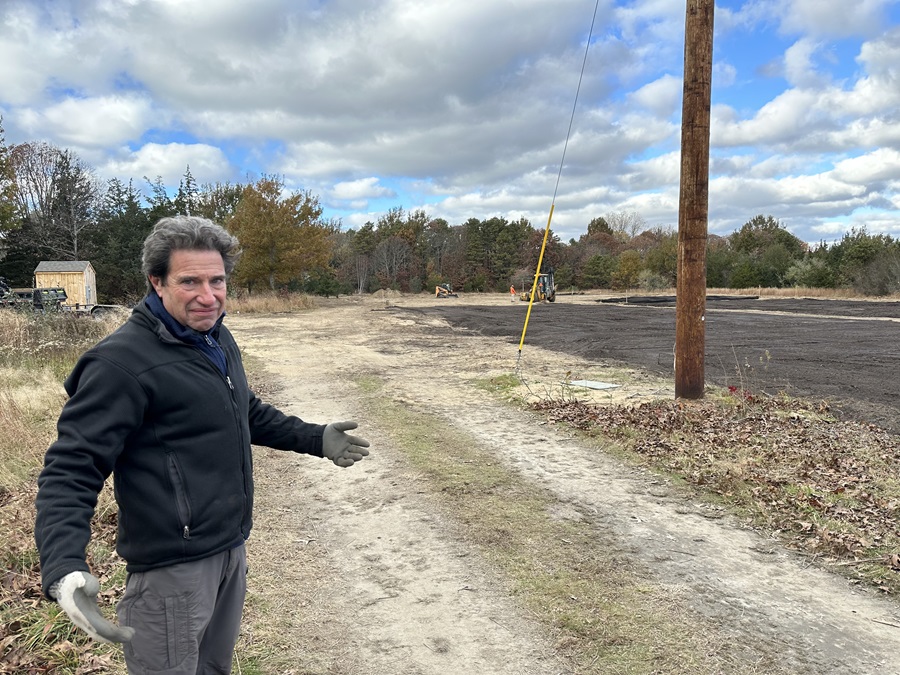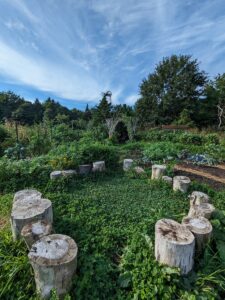ORLEANS — Even though most of the farmers who work the land at the Putnam Farm Conservation Area have tucked their plots in, and the swooping tree swallows have gone for the winter, the property is still abuzz with activity.
Dump trucks lay mountains of dirt on newly cleared earth and excavators spread it out into neat new plots. They are at work on the current expansion of the community farm and recreation space owned by the town of Orleans and managed by the Orleans Conservation Commission.

The town is adding eight new 50-by-70-foot plots to be completed by this coming spring, which will bring the total number of 3,500-square-foot agricultural plots at Putnam Farm to 20.
The new plots were outlined back in the initial 2011 land management plan and will be awarded by lottery. The town has yet to set a deadline for the drawing, but Peter Jensen, chair of the town’s agricultural advisory council, said he expects it will be “mid to late winter,” and according to the town website, “those interested in entering the lottery should do so now.”
Putnam Farm is a 14-acre parcel not far from the Eastham-Orleans town line. It sits along Jeremiah’s Gutter, now known as Boat Meadow Creek, where the first canal to cut across the Cape Cod peninsula was opened by a storm in 1717.
According to the Orleans 2011 Land Management Plan for Putnam Farm, in 1956 the property, which had long been farmland, was purchased by Joseph Henry Putnam from Dick Nickerson for $10,000. The next year, Putnam rolled back the topsoil and sold the gravel underneath to the Mass. Dept. of Public Works for the construction of the “Eastham rotary” over nearby marshland.
Evidence of this removal can be seen at the northwest boundary of Putnam, in an approximately 10-foot-high rim that borders the back yards of homes on Goody Hallett Road in Eastham.

After the state took the gravel, the topsoil was pushed back over the pit and the Putnam family continued farming the land through the 1960s — but then only periodically before abandoning farming in the 1990s. Over the following decades, a young forest grew up over the former farmland.
The town of Orleans purchased the property on Dec. 29, 2010 from Joseph Putnam’s son, Jay Putnam, and designated the property as a “permanently protected open space” for conservation and recreation and — here’s what was unusual about the town’s plan — also for continued agricultural production.
Peter Jensen says that at first the town’s conservation dept. was wary about allowing three of the nearly 14 acres to be designated for agriculture because the farm encompasses a protected wetland.
But Jensen says that what is unique at Putnam is that the agriculture practiced there is what he calls “agroecology,” meaning agriculture that is “an ally to conservation, not an enemy.”

This is achieved, says Jensen, by ensuring there are no pesticides or fertilizers on the property and that sustainable agricultural techniques such as composting, mulching, cover cropping, and crop rotation are followed. The goal with sustainable practices, he says, is for agriculture not only to coexist with its surrounding environment but to actually regenerate damaged land.
Drusilla Henson, chair of the Orleans Conservation Commission and its liaison to the Putnam Farm property, says that decades of over-farming severely damaged the soil at the old farm. As the farmers working there now improve the soil, she says, its water infiltration and storage capacity will grow, helping to filter runoff, mitigate drought, and improve water quality in the area.
Protecting the wetlands is still a priority on the land here. Conservation and farming advocate Rick Francolini is hopeful that at a Dec. 19 meeting the conservation commission will give a thumbs up to restoring two small areas known as the Pond and the Shrub Swamp that he says are currently dried out and overgrown. They would become vernal pools to support amphibians and attract pollinators — changes that Francolini says will ultimately complement the farming and recreational aspects of the conservation effort.

Francolini, now retired from a career in advertising sales, doesn’t hold any official position in the Orleans government but is the unofficial expert and spokesperson behind much of the current growth taking place at Putnam. “Welcome to my office!” he says, opening the trunk of his 2000 Jeep Cherokee. It is filled with maps of plot expansion plans, a rusty hammer, books on wetland restoration, and dozens of publications detailing land management and environmental restoration projects.
Francolini says that, because the initial purchase of the land was made with money from the Massachusetts LAND (Local Acquisitions for Natural Diversity) program, the designated agricultural fields have to be available to any resident of the state — not just Orleans residents. He says that requirement has turned out to be a good thing. It has made Putnam Farm a unique regional destination that brings together “like-minded, passionate, agriculturally and environmentally driven people from our surrounding communities.”
The 12 existing plots are being worked by farmers from Truro, Wellfleet, Eastham, Orleans, Harwich, Brewster, and Chatham.

The lottery-winning farmers will have to pay an annual $500 user fee and follow sustainable agricultural practices subject to monthly compliance checks from the Orleans Agriculture Council and conservation department.
The restoration of agriculture at Putnam Farm is just one priority there, Jensen says. It is also a public recreation space, and that means farmers working plots on the site are “ambassadors to agriculture” and have a responsibility to demonstrate orderliness and environmentally sound practices.
Natalia Redyk of Eastham, a physical therapist who farms at Gibbous Moon Garden, one of the Putnam Farm plots, says she is excited about the addition of eight new fields. The additions will mean more locally grown food. But for her it’s about more people joining in caring for the land here. The farm, she says, “is where I found the people I want to be friends with.”



